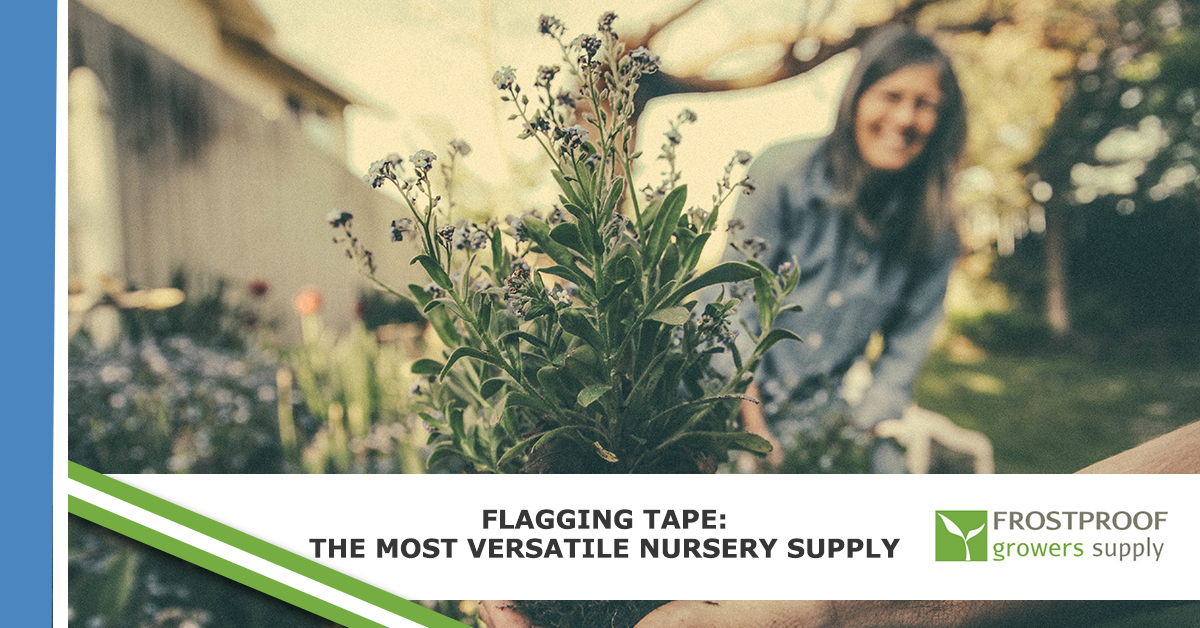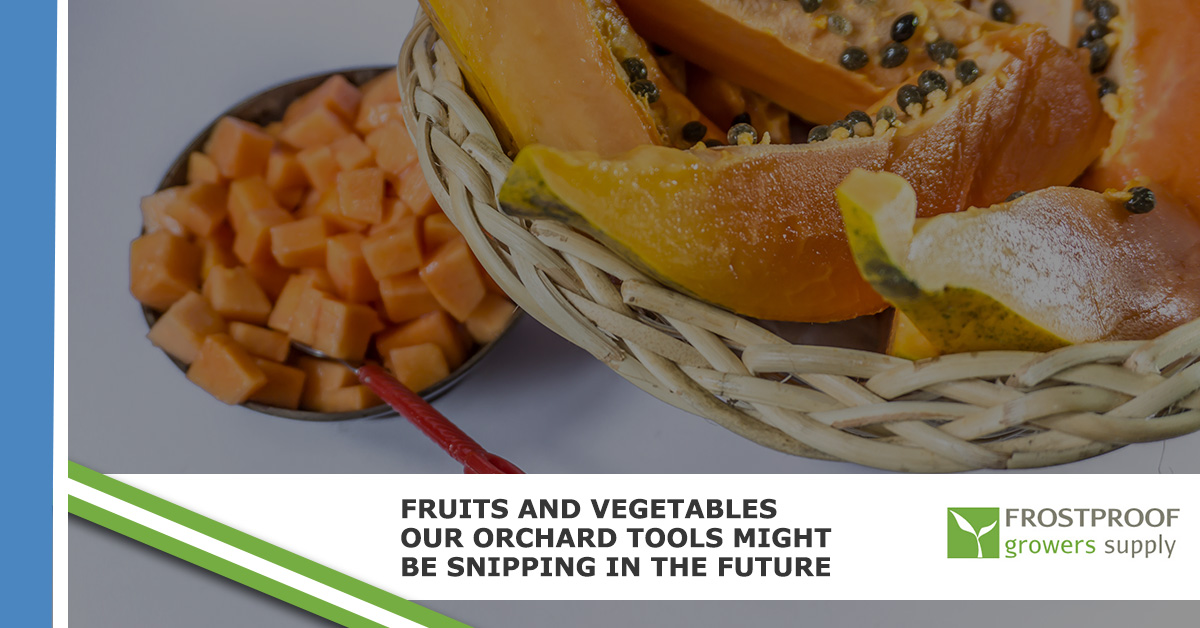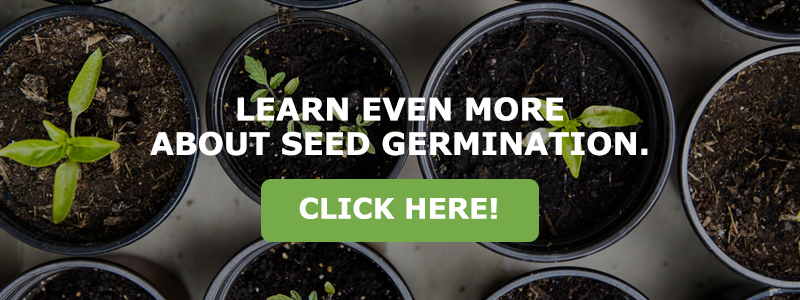 Loading... Please wait...
Loading... Please wait...Blog - nursery supply
Flagging Tape: The Most Versatile Nursery Supply
Posted by Frostproof Growers Supply on 9th Jan 2019

If you work in a nursery, it’s likely that you already have flagging tape around. You might even use it all the time, making it an indispensable nursery supply.
As we’ve talked to people about the products we sell, we’ve found that most nurseries and orchards use flagging tape, but they only use it for one purpose over and over again. While that’s fine, they’re not making full use of flagging tape and how it can increase nursery organization and safety more effective. Let’s take a look at how flagging tape can become an even more useful nursery supply.
Pruning
You probably have a good idea of when each kind of tree or bush will react better to pruning. But few plants want to be pruned in the summer, even though summer is when you can most easily identify the dead branches and see the shape of the tree — and the shape that you’d like to prune it to.
With flagging tape, you can identify the branches you want to prune and then saw them later when the tree will take to the pruning better. Simply tie some flagging tape on when the tree has its leaves, then prune it in the season that particular tree will take best to it.
Identify Problems
Sometimes the best use of flagging tape is to identify problems that you might want to check out later. If you have 100 trees in a nursery and a few look like they have a problem — whether it’s insect or fungal — you’ll need to a way remember which ones to keep an eye on to make sure that the problem doesn’t get any worse.
This would be easy for trees that are in wrapped up and ready to be sold, since you can just set those trees aside. But for trees that are still in the ground, flagging tape is an excellent option.
Flag Safety Issues
Whether you have a nursery that’s open to the public or one that’s supplying trees to consumer nurseries, safety should always be a concern. But no matter where your nursery is, there are bound to be some safety concerns that you should highlight. Maybe it’s to draw attention to a sign that warns against the holes in the ground from recently dug-up trees. Or perhaps there’s something in the ground — a big rock, an old metal sign post, fallen fencing — that you don’t want your loader to hit as it’s picking up trees to ship. Flagging tape is a great way to bring attention to dangerous situations.
“Where did I leave off…?”
Rows and rows of trees tend to look a lot alike. So when you’re in the middle of something that takes a long time to do, such as spraying or pruning rows after row after row, it can be difficult to remember where you left off when it’s time to stop for the day. Flagging tape to the rescue! Not only can you flag the row, but you can also flag the exact tree you left off on. That’s one of the great things about flagging tape: it can stay up for years or just hours.
Which Trees To Move
In forestry, tape is often used to indicate which trees are meant for removal. A forest ranger or arborist will come along and flag the trees that are to be cut down or trimmed, and then someone who’s better with a chainsaw will come along and do the manual labor.
Something similar can happen at a nursery. The person in the know can come along and tag certain trees. Maybe they’re the ones that are being removed and packaged today, or perhaps those trees are the ones that are reserved for a special bulk order. Either way, identification with flagging tape is one of the easiest ways of letting one person do their job so that a different person can come along later and do their own job.
Mark Trees For Grafting
Grafting can occur at your end (if you create fruit cocktail trees) or once they reach the orchard. If it’s taking place on your end, flagging tape can be very important to identify which trees are going to be the rootstock and which are going to be providing the scions. We carry over 15 different colors in flagging tape, so it will be easy to tell which is which!
Don’t Lose The Information
There’s one way to identify trees better than flagging tape, and that’s by using metal tags. These tags keep impressions, so there’s no way for the information put on them can fade or wash away.
But sometimes these tags can fall off, or the signs in front of a row of trees can get kicked away. If you’re worried about this, why not set up a flagging system for secondary identification? Red flagging tape for pecan trees, green for walnut, polka dot for almond. It’s just a nice easy backup in case something goes wrong with the primary identification and you have to pass this information to someone who can’t identify the tree by its bark!
Be Sure You Have Enough Flagging Tape!
The uses we mentioned above are far from the only ways that a nursery can use flagging tape, but it might give you a few ideas on how you can use these incredibly versatile nursery supplies to your advantage. The flagging tape we carry is made from PVC, so it’s very durable and colorful. It holds up to wind, rain, and snow through the seasons. Click here to see all of the colors and patterns we have to offer.

Fruits And Vegetables Our Orchard Tools Might Be Snipping In The Future
Head to any grocery store in a big city and you’re going to find more options than ever. We’re not just talking about in the cereal aisle or the new olive bar they installed next to the selection of cheeses from around the world. The fact is that there’s a greater variety of fruits and [...]
The Orange Orchards Our Growers Supply Supports
In a recent article we discussed some of the most popular types of apples and how our growers supply company can provide the harvesting tools necessary to keep an orchard growing. We have everything necessary to get the tree from sapling to fully-producing tree.But there’s no doubt that many of those who are stopping by [...]




